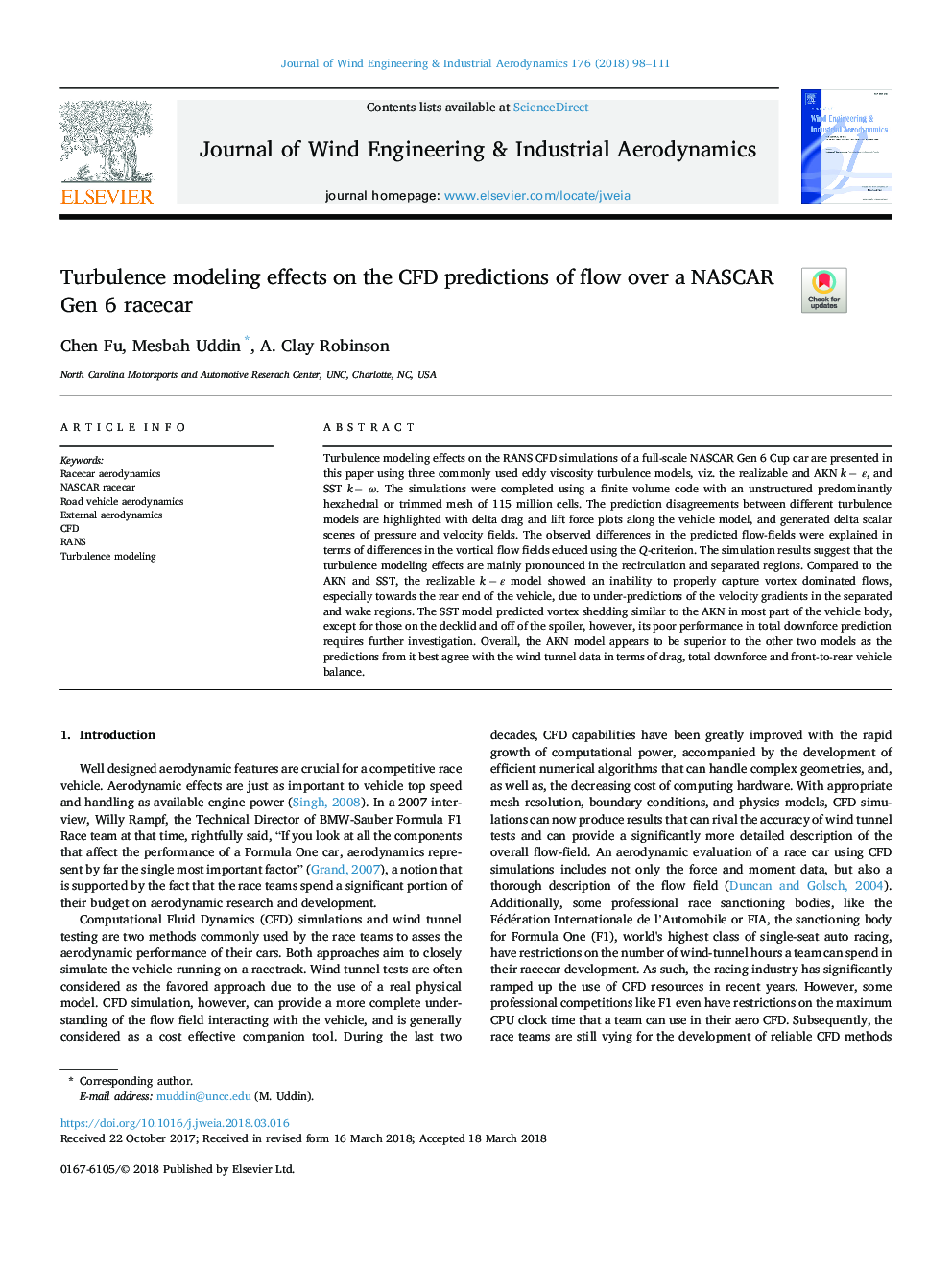| Article ID | Journal | Published Year | Pages | File Type |
|---|---|---|---|---|
| 6756893 | Journal of Wind Engineering and Industrial Aerodynamics | 2018 | 14 Pages |
Abstract
Turbulence modeling effects on the RANS CFD simulations of a full-scale NASCAR Gen 6 Cup car are presented in this paper using three commonly used eddy viscosity turbulence models, viz. the realizable and AKN kâε, and SST kâÏ. The simulations were completed using a finite volume code with an unstructured predominantly hexahedral or trimmed mesh of 115 million cells. The prediction disagreements between different turbulence models are highlighted with delta drag and lift force plots along the vehicle model, and generated delta scalar scenes of pressure and velocity fields. The observed differences in the predicted flow-fields were explained in terms of differences in the vortical flow fields educed using the Q-criterion. The simulation results suggest that the turbulence modeling effects are mainly pronounced in the recirculation and separated regions. Compared to the AKN and SST, the realizable kâε model showed an inability to properly capture vortex dominated flows, especially towards the rear end of the vehicle, due to under-predictions of the velocity gradients in the separated and wake regions. The SST model predicted vortex shedding similar to the AKN in most part of the vehicle body, except for those on the decklid and off of the spoiler, however, its poor performance in total downforce prediction requires further investigation. Overall, the AKN model appears to be superior to the other two models as the predictions from it best agree with the wind tunnel data in terms of drag, total downforce and front-to-rear vehicle balance.
Keywords
Related Topics
Physical Sciences and Engineering
Energy
Renewable Energy, Sustainability and the Environment
Authors
Chen Fu, Mesbah Uddin, A. Clay Robinson,
